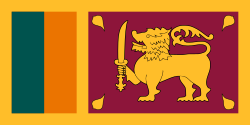
Back مملكة بولوناروا Arabic Regne de Polonnaruwa Catalan Reino de Polonnaruwa Spanish Royaume de Polonnaruwa French पोलोन्नरु राज्य Hindi Regno di Polonnaruwa Italian ポロンナルワ王国 Japanese 폴론나루와 왕국 Korean പൊളന്നരുവ രാജ്യം Malayalam Reino de Polonaruva Portuguese
Kingdom of Polonnaruwa පොළොන්නරුව රාජධානිය Polonnaruwa Rājādhaniya | |||||||||||||||
|---|---|---|---|---|---|---|---|---|---|---|---|---|---|---|---|
| 1055–1232 | |||||||||||||||
 | |||||||||||||||
| Capital | Vijayarajapura | ||||||||||||||
| Common languages | Sinhala | ||||||||||||||
| Religion | Theravada Buddhism | ||||||||||||||
| Demonym(s) | Sinhala: පොළොන්නරු, romanized: Poḷonnaru | ||||||||||||||
| Government | Monarchy | ||||||||||||||
| King | |||||||||||||||
• 1055-1111 | Vijayabahu I | ||||||||||||||
• 1153-1186 | Parakramabahu I | ||||||||||||||
• 1187-1196 | Nissanka Malla | ||||||||||||||
• 1215-1232 | Kalinga Magha | ||||||||||||||
| Historical era | Polonnaruwa period | ||||||||||||||
• Established | 1055 | ||||||||||||||
• Disestablished | 1232 | ||||||||||||||
| Currency | Coins | ||||||||||||||
| |||||||||||||||
| Today part of | Sri Lanka | ||||||||||||||
| Historical states of Sri Lanka |
|---|
 |
The Kingdom of Polonnaruwa[note 1] (Sinhala: පොළොන්නරුව රාජධානිය, romanized: Polonnaruwa Rājādhaniya) was the Sinhalese kingdom that expanded across the island of Sri Lanka from 1070 until 1232. The kingdom started expanding its overseas influence during the reign of Parakramabahu the Great.[1]
It had an influence in Pandya Nadu since its involvement in a civil war in the Pandya country. During this war, Pandya Nadu was seized as a country administered by the military of Polonnaruwa and Vira Pandyan of Pandya Dynasty. The tributaries of the Chola empire such as Tondi and Pasi came under its and Vira Pandya military rule.[2] Rameshwaram was under Sinhalese and Vira Pandyan Alliance rule till 1182.[3] Its currency Kahapana was struck in these places. During their influence on pandya nadu, construction works were undertaken. But Soon after their initial victory, Vira Pandyan army and Polonnaruwa army are defeated by Cholas and lost the control of Pandya Nadu, Tondi, pasi and Rameswaram.[4] [5] According to the Chola record at Tirukkollambudur of the fourth year of Kulottunga III (A.D. 1182) "the Singhalese soldiers had their noses cut off and rushed into the sea. Vira Pandya himself was compelled to retreat. The town of Madura was captured and made over to Vikrama Pandya." The war thus ended in favour of the Cholas, sometime in the 1170s.[5]
Despite the prosperity endured under kings such as Parakramabahu, territorial and political instability would repeatedly occur, as the royal court was embroiled with factionalism chiefly between the Pandya and Kalinga bloodlines of the Polonnaruwa kings. This gave the royal military the opportunity to back their own preferred claimants to power, and generals like Ayasmanta and Lokissara would repeatedly seize the throne and install puppet rulers. Queen Lilavati's tumultuous reigns are a notable example for this, having come to power thrice under various generals. This escalating power struggle put the kingdom under decline, as evident from repeated intervention and raids by the Pandyans and Cholas to the North.
In 1212, the capital was seized by Parakrama Pandyan, a rival claimant who took power via Pandyan assistance. Only three years later, Kalinga Magha, whose title evidently traces his bloodline to that of the Eastern Ganga dynasty of Odisha, invaded the kingdom with the help of his soldiers and mercenaries from the Kalinga, modern Kerala and Damila (Tamil Nadu) regions in India, capturing the previous ruler. [6] After the conquest of Polonnaruwa kingdom, he moved the capital to the Jaffna peninsula which was more secured by heavy Vanni forest and ruled as a tribute-paying subordinate of the Chola empire of Tanjavur, in modern Tamil Nadu, India.[6] As described in the Mahavamsa, Polonnaruwa was sacked and its population massacred, and the widespread devastation the region fell under prompted a massive migration into the South, ending the 1500-year long civilization of the Rajarata basin.
Following the capture of the royal capital by Magha, opposition coalesced around various warlords and nobles of the previous kingdom, who established fortresses in numerous locations to fight back enemies from the North. This would eventually give rise to Vijayabahu III, the ruler of the fortress of Dambadeniya, who eventually centralized Maya Rata by subjugating the power of rival lords and Magha's influence and established the kingdom of Dambadeniya in 1232, marking the beginning of the Transitional period in Sri Lankan history.
Cite error: There are <ref group=note> tags on this page, but the references will not show without a {{reflist|group=note}} template (see the help page).
- ^ Wright 1999, p. 37.
- ^ Balasubrahmanyam 1971, p. 255.
- ^ Sri Lanka in Early Indian Inscriptions. p. 5
- ^ Sastry, Nilakanda. The Colas Vol 2. pp. 103–104.
- ^ a b Aiyangar 1991, pp. 3–10, 42, 105.
- ^ a b de Silva 2005, pp. 91–92.